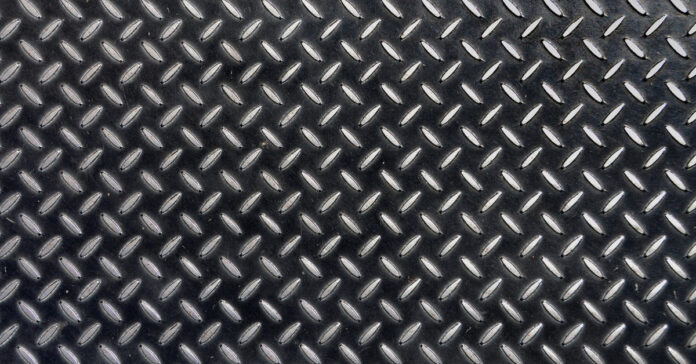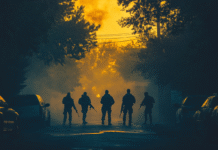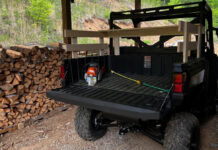I went on a bit of prepper spending spree this weekend, getting ready for uncertain times ahead. I’ll be covering some of what I bought and why over the next couple of days.
My first expenditure was to buy a diamond plate tool box for the bed of my pickup truck. The one in my old truck would not fit, and I missed having it. I had priced these out at multiple stores, and you can spend anywhere from $300 to $1,200. I spent less than $400 for the box, an extra interior tray, and a couple extra J-bolts for secure mounting.
Happily, my wife approved the expenditure. I’m guessing she wanted to get the storage bins I keep my truck out of the backseat area. I eliminated all but one, giving us extra space for the dog and anything else we want to carry.
How is this Related to Prepping?
You may ask, how is a toolbox for your truck a prepping expense? I bought it to carry my vehicle survival supplies, so I consider it a prepper item. If I wasn’t a prepper, I wouldn’t need it.
Another reason is that because of the new toolbox, I am once again transporting an old military surplus .308 rifle with me all times. This is one of my least favorite guns. I bought it in the 1990s when I was new to the shooting world, and it is not the rifle I would choose to fight with today. However, it is a capable rifle, and it sure beats no rifle. Best of all, if it gets stolen or damaged in an accident, I won’t be too upset and the financial loss will not be too great.
I selected a .308 for my car gun years ago because of the cartridge’s greater penetrating power against vehicles compared to a 5.56. Yes, the gun itself is heavier and longer than an AR, but I’m driving, so weight is not a huge issue. I see no reason to change my thinking. When surrounded by cars or people using cars as cover, a heavy 147 grain bullet beats a light 55 grain bullet.
Not Easily Accessible
Because the gun is in a locked container inaccessible from the passenger compartment, it is not something we will whip out if someone attacks us in a road rage situation or at a carjacking. We have our EDC guns for this. If a situation breaks out once we are at our destination, or well ahead of us in a traffic jam, we will have some time to access our heavy firepower. If the SHTF and we have to hike home, I’ll feel better with a rifle than just a couple of pistols.
Another advantage is keeping the rifle in an exterior locked compartment should make it legal to drive across state lines (keep in mind that I am not a lawyer and state laws vary). Likewise, there should be no compelling reason for a law enforcement officer to search the tool box since the items in it are no threat to him or her during a traffic stop.
Along with the gun, I have six magazines and 240 rounds. This includes two M14 bandoliers with stripper clips. I hope I never need 240 rounds of .308 while on the road, but I feel better knowing it’s there.
Also in the tool box are 100 rounds of .22LR, .38SPL, 9mm, .40 and 5.56. This is to provide extra ammunition for any gun my wife or I are carrying. I will have to add some .45s and maybe a few 12 gauge rounds to finish out my vehicle armory. Neither the gun nor ammo are visible when you open the box. Unless you move things around or dig into it, the contents look quite benign. This allows me to open the box and pull out a bungee cord without raising questions from anyone close enough to see inside.
But it’s a TOOL Box
Yes, it’s a tool box and I keep some tools in there as well. When you open it up, you see things like a tow strap, a tire repair kit with a 12-volt air compressor, ratchet straps, bungee cords, and jumper cables. There’s a roll of duct tape and a few wrenches, but I do not harbor any vision of making serious car repairs myself. Today’s computerized vehicles are too complicated for a guy who grew up working on cars from the 1970s.
The tool box also contains a first aid kit and other the components of my vehicle survival kit: two wool blankets, an emergency blanket, spare socks, a light jacket, work gloves, a poncho, several kinds of fire starters, a baggie of dry tinder and kindling, a hatchet, a folding saw, a small machete, rope, a compass, a monocular, a water filter, a 2-quart canteen, and an old metal canteen cup in which you can boil water or make soup
Finally, there is some emergency food inside, including some MRE pouches. I dislike carrying food in the tool box because it can get hot in the summer sun, leading the food to expire prematurely. I dislike going hungry even more, so I leave food in there, just in case. Take it from me and do not leave bottled water or candy in your tool box. The former freezes and ruptures in the winter while the latter melts in the summer. Nothing like scraping globs of melted Jolly Ranchers off your gear to drive home that lesson.
Get Home Kit
While all this gear is designed for unforeseen circumstances, like getting stuck on a road for hours like those folks on I95, sliding off a back road and not getting found for a few days, or becoming stuck in some kind of violent outbreak, there is another important reason to carry this gear: It will help us make our way home if we suddenly cannot drive.
If we are 20 miles and two or three mountains away from home when an EMP strikes, the gear in my EDC baga and the car is what will help us walk home. It will keep us drinking clean water, fill us with some calories, help us stay warm and dry, allow us to defend ourselves, and possibly help us procure food.
What’s in your car kit? What have I left out? Let us know in the comments below.







